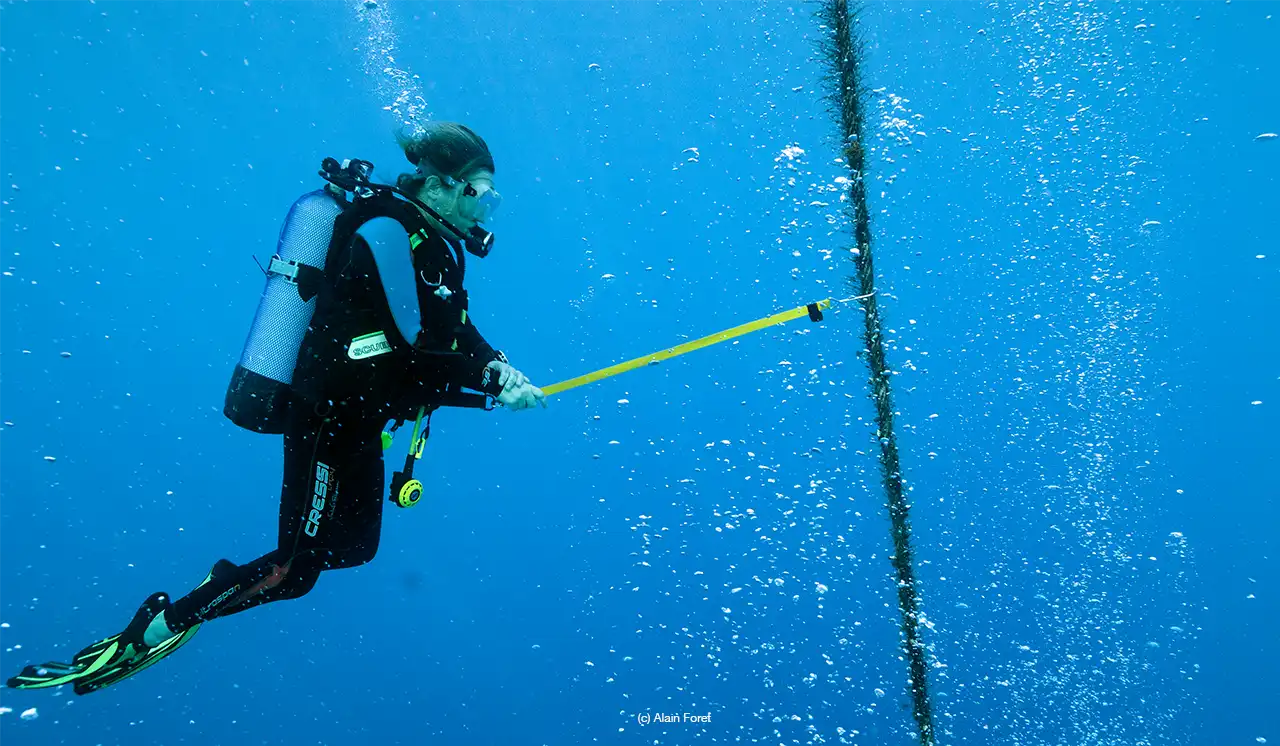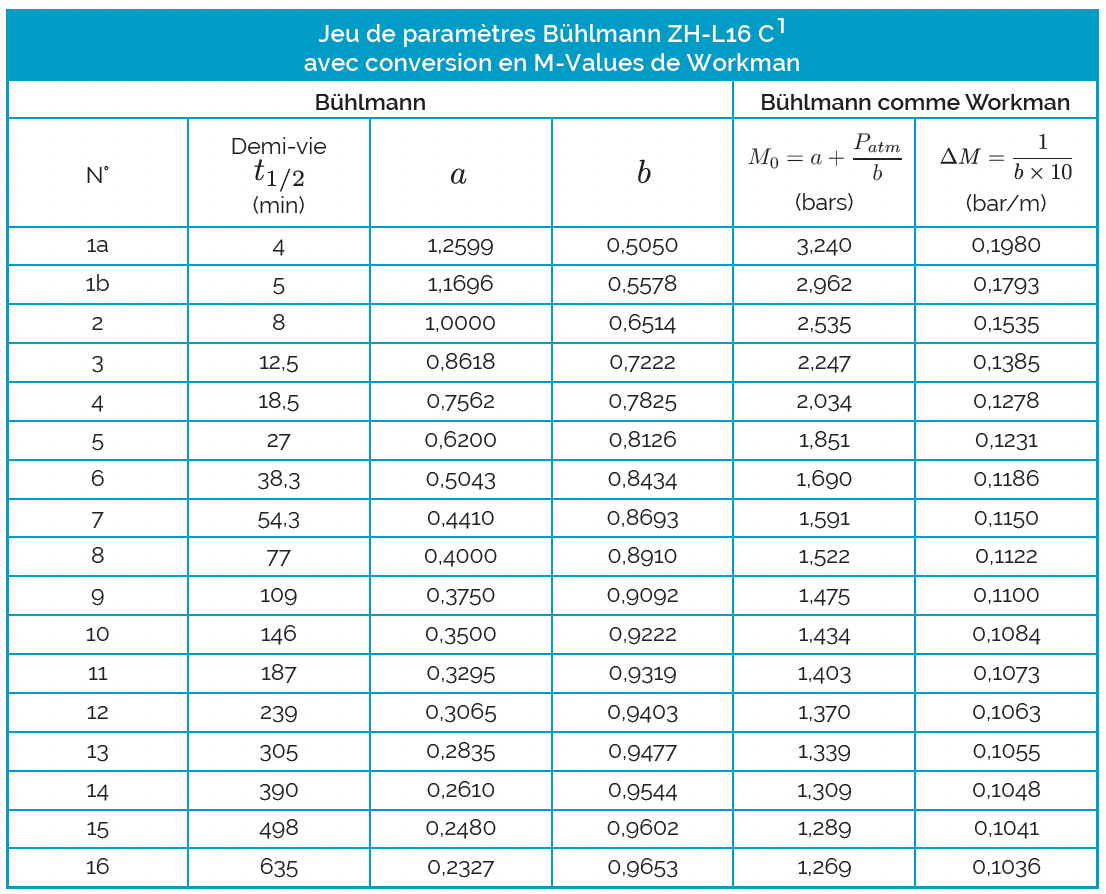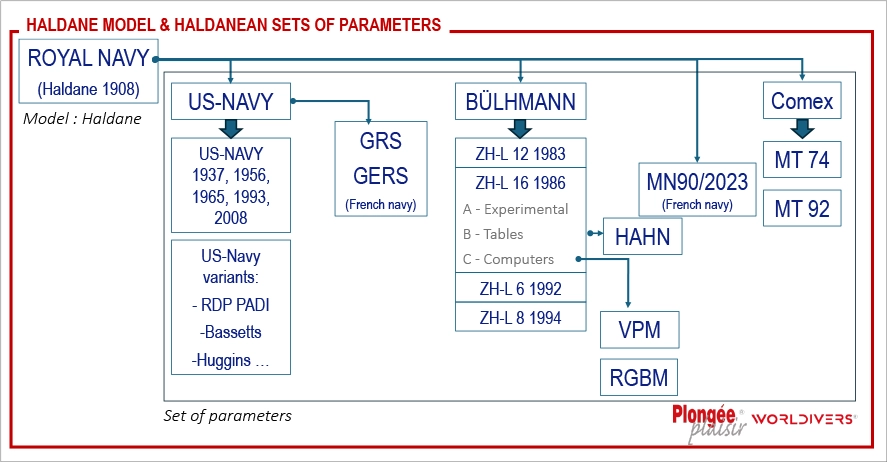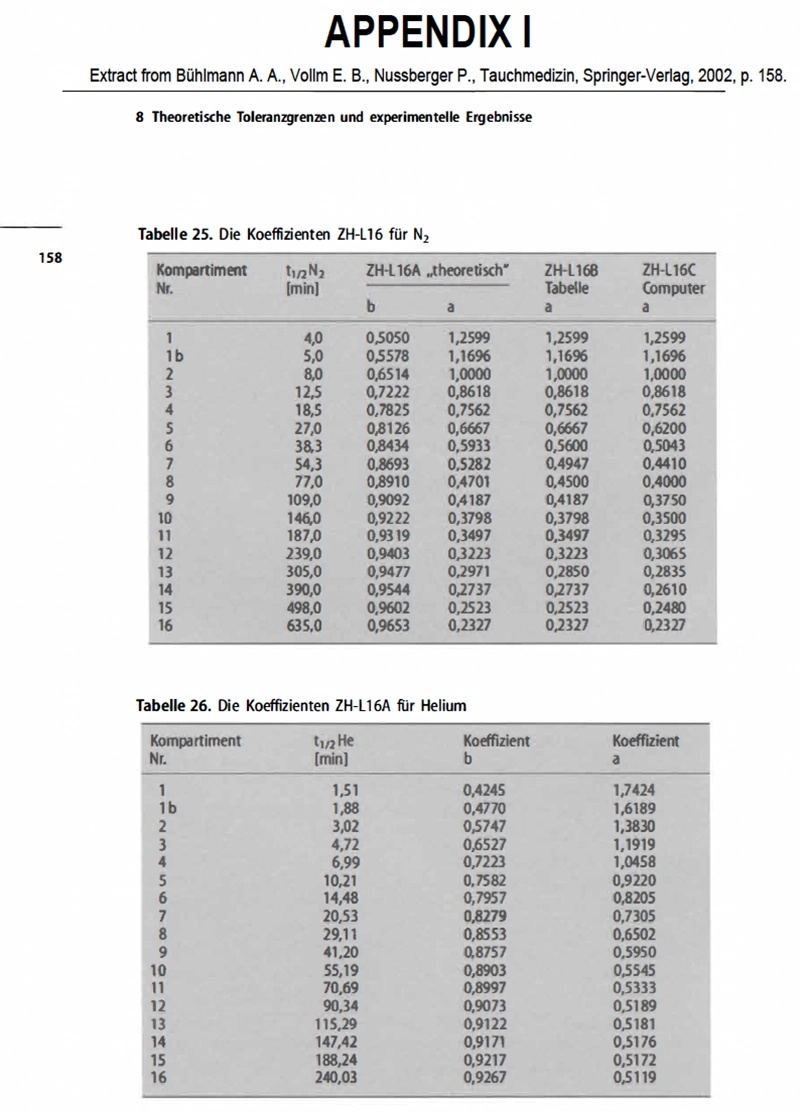BÜHLMANN ZH-L
ZH-L 16 C GF does not exist; it is a marketing name that refers to ZH-L 16 C from 1986.

1. History
While the US Navy has dominated the field of desaturation since the 1950s, Swiss doctor Albert A. Bühlmann published Dekompression – Dekompressionskrankheit in 1983.
This book, translated into English the following year under the title Decompression - Decompression Sickness, would go on to make history in the field of desaturation.
Albert A. Bühlmann had been working on the subject for many years. In 1960, with the help of the French and U.S. navies, he created the hyperbaric physiology laboratory at the University Hospital of Zurich.
In addition, from 1964 onwards, financial support from Shell Internationale Petroleum Maatschappij enabled him to carry out numerous studies on deep-sea diving, a topical subject at the time, with the challenge of offshore oil.
It was during these same years that Jacques-Yves Cousteau and his team conducted their experiments in underwater living (saturation diving). It was also during these same years that Comex was founded, which would go on to become the world leader in the offshore market.
2. Notation and versions of sets of parameters
Bühlmann did not design a desaturation model (his notation with coefficients a and b can be transposed into Workman's notation and does not alter Haldane's formulas).
However, he did publish various sets of purely Haldanean parameters for safe air diving (without deep stops, which are dangerous with air).
For helium dives, the validity of his Haldanean set of parameters is subject to debate, hence the use of asymmetric GF types 50/80 or 30/70 for helium diving in order to force deep stops (reducing the risk of bends, desaturation accidents in the inner ear and osteonecrosis).
More information about GF : click here .
Bühlmann chose to notate his parameters according to the following standard:
- ZH for Zürich ;
- L for Linear (not "limit" as it is sometimes written);
- As an index, the number of pairs of different coefficients a and b (M-Values) and not the number of compartments;
- Possibly a letter (A, B, C) to identify different versions of a set of parameters (A-Experimental; B-Printed tables; C-Computers).
2.1 Sets of parameters published by Bühlmann for N2 dives (air, nitrox)
- ZH-L12 (N2), original version 1983 ;
- ZH-L16 A (N2) later version that served as a trial (beta version or “theoretical” version);
- ZH-L16 B (N2) used to publish printed diving tables with, compared to version A, a reduction in the coefficient ‘a’ for the 38.3, 54.3 and 77 minute compartments;
- ZH-L16 C (N2) for use in dive computers with, compared to version A, a reduction in the coefficient ‘a’ for compartments from 27 to 498 min in order to take into account an additional safety margin (multi-depth profiles);
- ZH-L8 et ZH-L6 (N2), extract from ZH-L16 C (N2) in order to limit the calculation time on early dive computers (this is no longer necessary today due to technological improvements).
2.2 Set of parameters for helium (He) dives
Only one version, specific to helium, has been published: ZH-L 16 (He) experimental version (A). See below.For half-times (T1/2) in helium, Bühlmann divided the half-times in nitrogen (N2) by 2.645, corresponding to the ratio of the molecular weight of nitrogen to that of helium. This choice is still criticised by some authors.
2.3 Set of parameters for trimix (He/N2) dives
Bühlmann does not provide a set of parameters for trimix dives. One method would be to calculate a weighted average of each of the coefficients ‘a’ and ‘b’ for nitrogen (N2) and helium (He), based on the percentage of each of these two gases.
2.4 Sets of parameters and dive computers
2.4.1 ZH-L 16 C
Dive computers for helium (heliox, trimix) that refer to ZH-L 16 C are using incorrect terminology. ZH-L 16 C only exists for nitrogen (N2). For helium (He), they should write ZH-L 16 (A) He.Ultimately, there are:
- ZH-L 16 C (N2), 1986 - Air, nitrox.
- ZH-L 16 A (He), 1986 - Heliox, Trimix.
2.4.2 ZH-L 16 C GF
ZH-L 16 C ‘GF’ does not exist. It is a marketing invention indicating that it is the 1986 Bühlmann parameter set (ZH-L 16 C) that can be modified by manually applying Gradient Factors (GF), which increase the conservatism of desaturation by reducing M-Values.Note: GF have been used for over 30 years in all dive computers, with pre-set modes such as L0, L1... or P0, P1... or SF0, SF1... or R0, R1... etc. Consequently, the application of GF in dive computers is not new. The confusion surrounding this ‘novelty’ was created by certain models of dive computers which, rather than pre-set modes, allowed users to set GFs freely.
3. Convert Bühlmann's M-Values to Workman's M-Values
* Workman, Robert D., Calculation of decompression schedules for nitrogen-oxygen and helium-oxygen dives, Res Rep 6-65. Rep US Navy Exp Diving Unit, 1965.
Workman notation : Mp = M0 + DeltaM x pwhere :
- Mp is the M-Value at depth p;
- M0 is the surface M-Value (given by the set of parameters) ;
- DeltaM (given by the set of parameters) is the variation in M-Value as a function of depth p (in metres).
- M0 (bar) = a + (Patm/b)
- Delta M (bar/m) = 1 / (b x 10)
a and b are coefficients given by the Bühlmann set of parameters;
Patm is atmospheric pressure (in bar).
The value of this transformation is educational, as Workman's equation is easier to understand than Bühlmann's.
M-Values - Bühlmann ZH-L 16 C (N2)

Extract from Foret A., Plongée Plaisir 4, 12e édition, éditions GAP. With the author's consent.
4. M-values and gradient factors (GF)
5. Haldanean sets of parameters

APPENDIX

